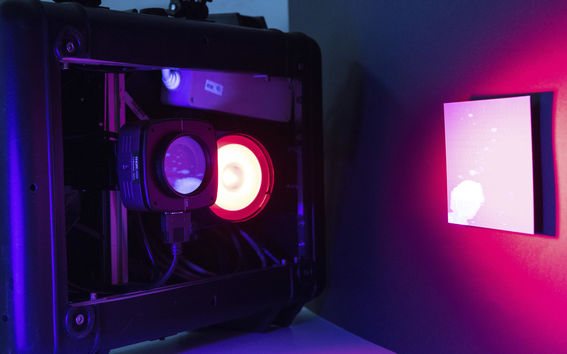Invisible dirt detector tested out in Finnish hospital

Aalto University researchers have developed a method that can detect dirt and bacteria that cannot be seen with the naked eye. The device combines artificial intelligence and a hyperspectral camera that can detect hundreds of different colours. The device, which they have named AutoDet (automatic biological contamination detection) is especially useful for healthcare during seasonal health outbreaks, or epidemics.
The team recently tested the device in the waiting areas of Satasairaala Hospital in Pori, in west Finland. The pilot study involved taking a total of 200 measurements from surfaces such as tables and chair armrests, focussing on flat surfaces.
‘We were able to detect the biofilms left by people coughing, which are difficult to detect with the naked eye. The study demonstrated that the device can alert the user of stains as they appear on surfaces,’ explains Aalto University Academy Research Fellow Juha Koivisto.
The device detects any dirt that is not part of the surface. The study found biological material sensitive to blue light that is referred to as a protein’s optical fingerprint. From this, it can be concluded that bacterial growth has formed or is forming on the table.
‘The advantage our system has over traditional methods is that our system is fully automatic. This makes the device cheaper to operate. It can also scan large areas, monitor them for 24 hours, and provide alerts when dirt is detected. The downside is that at the moment, the initial cost of the device is still high. However, mass production and tailoring of devices for specific applications should bring these costs down.’ Juha Koivisto explains
By changing the sensors of the device and the measurement technique used – so that it looks at smaller points instead of large areas – it could also be used to detect viruses.
‘At present, the artificial intelligence used and the device’s light wavelengths are suitable for detecting viruses as well. However, it takes longer to detect viruses and requires the examination of a saliva sample on a microscopic scale. We are currently searching funders and research partners for the virus detection project,’ says Juha Koivisto.
AutoDet received Business Finland funding for the commercialisation of the project, and the company CleanDet was established in November 2019 to carry the technology forward. Marianne Talvitie is the company’s managing director.
‘The technology is flexible, and it can be used in sectors such as the food industry, health care and travel, or in different housing services for the elderly – in short, anywhere where there is a need to restrict, for example, the spread of microbes,’ said Talvite.
CleanDet is working together with Kiilto to test the device for a variety of different applications.
‘The requirements for surface hygiene vary depending on the application area – for example, standards for medical instruments in hospitals are different compared to standards for coffee shop tables. I would venture to say, however, that after the current virus epidemic, there will be a general tightening of hygiene monitoring standards. This kind of device would enable us to assure that a surface is hygienic and respond to problems as quickly as possible,’ explains Ville Solja, Chief Business Development Officer at Kiilto.
Further information:
Research article: Contamination detection by optical measurements in a real‐life environment: A hospital case study
Juha Koivisto
Academy Research Fellow
Aalto University
[email protected]
Tel. +358 50 441 9233
Marianne Talvitie
Managing Director
CleanDet
[email protected]
Tel. +358 40 900 4846
Ville Solja
Chief Business Development Officer
Kiilto
[email protected]
Tel. +358 50 329 5211
Earlier news article: Bugs or dust? New method quickly reveals whether a surface is truly clean
Read more news

In low-hierarchy organisations, even key policy issues are discussed in Slack
In a recent study, Aalto University alumn Lauri Pietinalho, a visiting scholar at New York University's Stern School of Business, and Frank Martela, an assistant professor at Aalto University, investigated how low-hierarchy organisations deal with shared policies in confrontational situations and how authority functions within them.
Getting bacteria into line
Physicists use magnetic fields to manipulate bacterial behaviour
Nordic researchers develop predictive model for cross-border COVID spread
The uniquely multinational and cross-disciplinary research was made possible by transparent data-sharing between Nordic countries.